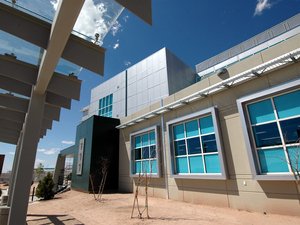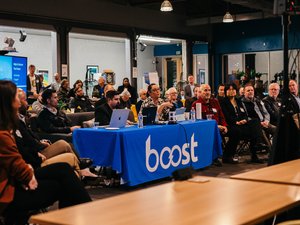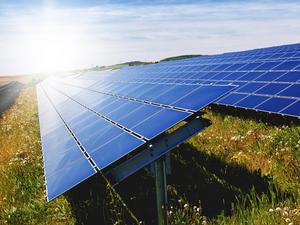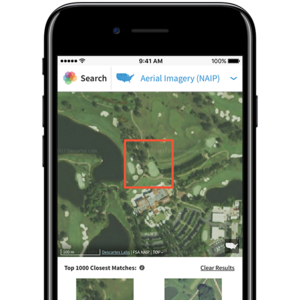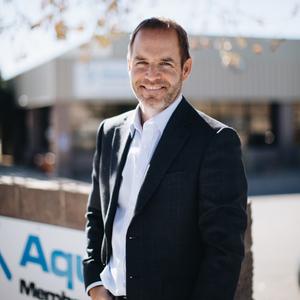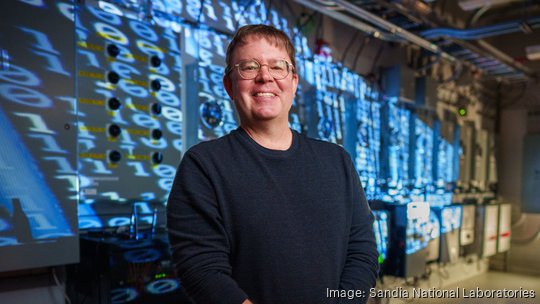
A team of researchers from Sandia National Laboratories and New Mexico State University have spent more than two years developing advanced software algorithms to help electrical grids recover from various impairments, while potentially cutting their initial development costs.
The research project, spearheaded by Michael Ropp, Ph.D., an electrical engineer at the Labs and the project's principal investigator, wants to ensure "microgrids" — or smaller-scale electricity systems used for more localized power output — can effectively "heal" themselves after taking damage, whether that be from weather phenomenons or malicious actors.
Essentially, algorithms developed by the Sandia and NMSU researchers would read a decrease in voltage in a microgrid caused by some sort of damage and use that reading to disconnect power supply to customers that are less vital, like, in the case of emergencies, individual homes.
The algorithms, too, can help microgrid systems self-assemble by balancing power production and consumption and isolating certain impacted areas — all without the need for outside communication, according to a release from the Labs.
Microgrids, or other standalone power system projects, could benefit from the technology Sandia and NMSU are researching, Ropp said. He added that, during his time working with a private company before moving to Sandia, many power system projects he worked with wouldn't be able to come to completion because of the costs involved with incorporating what he called "protection and dynamic control" into their designs.
Often, Ropp said, projects would have to run an extensive amount of fiber optics for communications, a costly endeavor.
"The genesis of our self-healing work was we thought, 'Look, we want the self-healing aspects, we want the microgrid aspects, but can we do it in a way that the various controlling agents are using only the measurement they can see, right where they are, so there are no communications required with anybody else,' " Ropp said.
That aspect, he added, both saves communication costs and helps microgrids become more reliable in the event of damage that might cut off communications in the first place.
Utility companies would be the end customers for the self-healing algorithms, Ropp said, by licensing the technology to use in their own power system designs. But he said it will most likely be around five years until the researchers can start testing the technology through pilot projects, and another one to two years after that for full-scale commercial application.
The team completed the first two-year phase of its research and is now readying for a second phase, which includes preparing the algorithms for controlled in-house testing at sites like Sandia's Distributed Energy Technologies Laboratory or a similar medium-voltage facility at NMSU, before starting pilot projects.
But Ropp said the team is "actively seeking" utilities and manufacturers of line and load relays, according to the Labs' release, who are interested in pilot projects. He added that the project uses mostly custom software.
"For utilities that have these test systems and things like that, we could probably largely use what they've got out there already," he said.
The initial phase of the research project was funded by Sandia's Laboratory Directed Research and Development program, and the U.S. Department of Energy's Office of Electricity's Microgrid Program, per the Labs' news release. The team is currently seeking funding for the research project's second phase.
Including Ropp and Matthew Reno, an electrical engineer at Sandia, the research team includes Olga Lavrova, Ph.D., an associate professor of electrical engineering at NMSU and former Sandia employee, and included a number of NMSU students and Sandia student interns.
Going forward, Ropp said the team has "a few more technical challenges" to address while "pushing forward" with field demonstrations.
"We're finding test systems that are operated by various partners that we can use to test this concept," Ropp said. "And eventually we will move toward pilot projects, which is where you do move to customer-serving circuits but in places where there's some controllability of what goes on.
"Once all that's done, then it's ready for prime time. We'll start putting it out on actual customer-serving circuits," he added.
